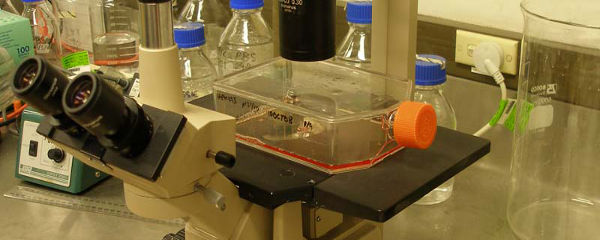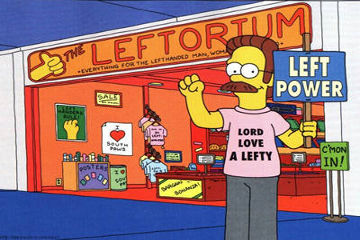What I’ve Learned:
“Z-DNA: Because everybody needs a little time to unwind.”
Maybe you’re familiar with the fundamentals of DNA. A pair of organic biopolymer strands composed of covalently-bonded nucleotide molecules, wrapped together in a double helix. It’s not exactly simple. But the basics are pretty well established, thanks to Watson and Crick (and Franklin, and Gosling, and a bunch of others). If that’s as complicated as it gets, super.
Naturally, it gets more complicated. The universe is a smug little infinitely-large bitch, yo.
One way DNA gets harder is the way that pair of helices wrap around each other. You’d think there’d just be one way to fit, like Legos clicking together. But no. A DNA double helix is more like a jigsaw puzzle: if you get really frustrated and smush the pieces into those little holes, it’ll go together just about any way you want.
In nature — which in this case means, in you — DNA comes in (at least) three forms. The usual, vanilla, run-of-the-mill DNA in most of your cells is called B-DNA. I don’t know what the B stands for, but almost all DNA looks like this, so I’m guessing it’s Boooo-ring.
Moving on to something sexier.
A-DNA is similar to B-DNA structurally; they’re both wound in a “right-handed” orientation, and spoon together like desperate freshmen on a third date. But A-DNA is scrunched up even tighter, like an overwound Slinky. That’s not especially surprising, because you only see this form in DNA that’s dehydrated. I don’t know how your last hangover felt — but twisted up, jumbly and curled in on yourself is probably not a bad description. That’s probably why they call this A(lcohol-soaked-bender)-DNA.
But it gets even weirder.
The third form of naturally-observed DNA is called Z-DNA, and it’s pretty freaky. Like, up is down and right is left and Team Edward and Team Jacob living together in sparkly harmony freaky. First of all, it’s not right-handed. The two strands flip directions and twist the other way around each other, like some genetic freakshow oozing out of Ned Flanders’ Leftorium.
Z-DNA is also ganglier than the other forms, twisting every two base pairs instead of one. It’s not a great look. And the Z stands for “zig-zag”, which is only about a half-step above naming a DNA confirmation “humpback”. Or “pizzaface”.
In the end, you sort of feel sorry for Z-DNA. It looks like some kid accidentally broke a real DNA molecule and tried to rubberband and bubblegum it back together, but there are pieces left over and none of the cracks line up right. It’s the Steve Buscemi of the deoxyribonucleic acid world.
But don’t feel too bad for Z-DNA. Despite it’s lopsided ugly-lefty-ducklingness (or maybe because of it), Z-DNA may actually turn out to be pretty important. Scientists are still exploring its role in biology, but it’s thought that regular old B-DNA can somehow drunken-Twister itself backwards into Z-DNA at spots where transcription occurs in the genome. And since transcription is where the DNA template gets read as RNA, which then becomes the proteins that every cell needs to survive, that’s kind of a big deal. If not for this temporary unwinding into Z-DNA, all our DNA might scrunch up together, winding tighter and tighter like a raging genetic-scale hangover. Even tequila shooters can’t hurt you that bad.
So we should all appreciate our letter-coded DNA double helix friends. B-DNA, steady and boring and essential — the plain white underpants of our genetic material. And A-DNA, which reminds us to hydrate at parties, and also not to get too wound up over things. But especially Z-DNA, the southpaw oddball of the group. Z-DNA demonstrates that even the strangest-looking among us have a role to play, and no matter how weird left-handed people are, we shouldn’t kick them out of the nucleus.
Also, we shouldn’t feed them through a wood chipper, probably. But it is about time to watch Fargo again on Netflix. Thanks, Z-DNA!



